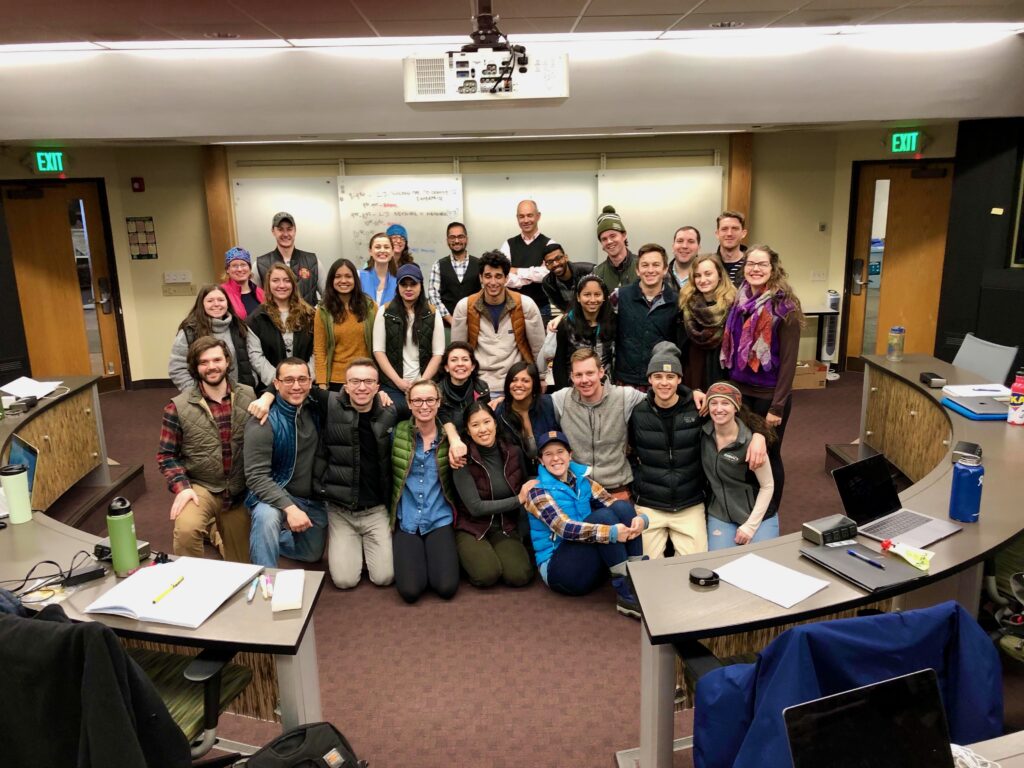
In-“Vesting” in Sustainability and Innovation


This post was written by Dan Versace ’20. Connect with him on LinkedIn.
Since the craft beer boom of 2012 started, many brewers across the country have found it hard to differentiate themselves from their competitors. Many have tried to create new and inventive brews and invest in a tap room where customers can come to the brewery and learn more about how the process is done while sampling the products.
But, in recent years the focus has shifted from inventive and innovative products and experiences to differentiation through the process by which the beers are made, with many breweries investing in the sustainability of their product and manufacturing lines. They can do this in a multitude of ways as complex as installing a device called an anaerobic digester to recycle wastewater that the brewery produces, or as simple as working with local farms to use their spent grain as food for a variety of livestock. Some breweries in the UK have even experimented with using stale bread from local bakers as a starter for their beers, limiting the amount of barley or hops that is needed.
With that being said, there is still room for innovation when it comes to the energy used in the brewing process along with the distribution and supply chains linked with the operation of the brewery. Many large scale consultancies such as SustainaBrew are working to refine a sustainability plan that works with the nuances that are inherent with brewing and selling beer, as laws and regulations differ from state to state, limiting the amount of barley or hops that is needed.
Environmental sustainability isn’t everything though; social responsibility has seen large growth in the brewing sector as well. Take Switchback Brewing for example. They recently shifted from a single ownership model to being 100% employee owned, allowing every single one of their employees to have a meaningful say in how the business operates and what decisions are made on a day to day basis. This has led to a company that operates like a family where everyone is vales and each person employed by the brewery is committed to seeing it succeed.
While it may seem like a no brainer to some, many others are still very wary of implementing these strategies for sustainability as they do run quite a high upfront cost, and can take a lot of resources and time to implement, with no guaranteed pay off. However, in a recent study produced by NPR it was shown that consumer’s willingness to pay increases when the breweries they are purchasing from are utilizing sustainable practices, something that is not necessarily true for other products in the marketplace. What is it about the brewing business that lends itself to this outcome? I believe that it is the client base and the values that they hold. The craft brewing industry has grown through, and is held up by the purchasing power of the millennial generation, a young consumer base that has sustainability at its heart and chooses to make purchasing decisions based on their values.
The proof is in the pudding (or perhaps beer in this case). Sustainability efforts in the brewing industry has positive effects on the world, the people who buy the product and work in companies, and, finally, the bottom line. There is only more to come in the future.
This post was written by Than Moore ’20. Connect with him on LinkedIn.
Before matriculating to business school, I worked full time as an emergency medicine physician assistant at the University of Vermont Medical Center. I, along with my colleagues, was solely focused on maximizing patient care. My responsibilities included diagnosing and treating patients of all ages and acuity levels. The clinical world became my home. Putting on scrubs every day to go into the hospital, I join the hundreds of other employees working towards a similar mission of delivering the highest level of patient care. The ability to practice and treat members in my community is a privilege. It is one of the greatest accomplishments with which I can relate. However, it can also monopolize your life, and is forever demanding. It becomes nearly impossible to pause and observe the system in which we operate. The pursuit of my MBA disrupted the traditional linear trajectory of my medical career and provided the time and space to refocus the lens in which I viewed the world.

Medicine is a vortex. To become a doctor, one must dedicate years of commitment to the craft. You must first complete prerequisite coursework before donating countless years toward schooling, residency, and fellowship. By demonstrating academic and clinical excellence and passing more tests than one could imagine, it then becomes time to start your clinical practice. The journey is arduous, but the reward to grant another breath to a gasping loved one is worth all the effort. Medicine becomes an addiction. We are slaves to the system to glean all the knowledge we can to optimize our performance. It monopolizes our lives with long days, demanding call schedules, and tragic cases that keep us up at night. However, I was granted the opportunity to take a sabbatical from my clinical responsibilities and observe the field from the outside.
I first learned of The Sustainable Innovation MBA (SI-MBA) program at UVM from a friend who knew of my love of academia and solving problems. Sustainable business became the perfect blend of my undergraduate analytical mathematical degree, my medical background, and my passion for the environment and society as a whole. Embedded in the curriculum are quantitative business skills such as finance, accounting, and economics, but there are also fundamental organizational skills taught through courses on corporate social responsibility, sustainable leadership, and teamwork. The focus of the coursework is to optimize a sustainable enterprise by maximizing the triple bottom line: people, profit and the planet.
The beauty of the SI-MBA program is that one can personalize their education to incorporate individual interests. For example, I am fortunate to tailor my business research and projects towards medicine. Subsequently, I wish to highlight ways in which the triple bottom line educational model has broadened my perspective to incorporate sustainability into fundamental daily operations in both the medical community and greater society.
People:
To begin, people are at the core of all operating systems. Our world revolves around successful human interactions. The ability to collaborate with one another stems from leadership and teamwork skills. Group work is a fundamental component in the SI-MBA curriculum. During each of the module terms, every student is designated a team. The team is responsible to execute all projects, presentations, and assignments together. Rarely, do you see employees working alone, so why should academics reflect that?
Medicine, in particular, revolves around team collaboration. With the blending of specialties and skills to navigate different disease processes, we are constantly reliant on our colleagues for their expertise. If a trauma victim presents requiring extensive resources, multiple hands are needed to gain IV access, deliver medications, perform diagnostic studies, and make life altering decisions. One could not operate alone in such a high stress environment. By maximizing team collaboration, executing impeccable leadership qualities, and maximizing the potential of all skilled team members, a team can perform at its highest capability. Medical schools are paying more attention to these traits by focusing efforts on team based learning; however, the ability to acquire these skills outside of medicine through my coursework and integrate them back into the clinic will become a critical asset in my performance as a provider.
Continue reading “A Sustainable Innovation MBA Disrupts The Medicine Vortex”This post was written by Taran Catania ’20. Connect with her on LinkedIn.
Whether I was working in field research for a local conservation group or serving as a legislative representative for a national environmental organization, I loved my time in the nonprofit sector. No matter where I was, I was surrounded by mission-driven people, my work gave me a sense of purpose, and I was always proud to answer the standard icebreaker “so what do you do?”

But then I left the nonprofit world – and not for the reasons you might think. The assumption when people leave the nonprofit sector to go to business school is that person wants to make more money. Now, don’t get me wrong: there are extremely good reasons the nonprofit sector should stop undervaluing and underinvesting in staff. But the short answer is no, I did not leave for that reason.
The real reason is: I was tired of fighting for change, but not seeing an obvious plan for its impact or scalability. I was tired of “doing good” by rules that limited how much good we could do. I wanted the chance to take risks for something I believed in.
During Dr. Erik Monsen’s Crafting the Entrepreneurial Business Model class, I was introduced to a TED Talk by activist and fundraiser Dan Pallotta called “The way we think about charity is dead wrong.” As Pallotta points out, nonprofits are rewarded more for not acting like businesses (such as severely restricting overhead spending – “For every dollar donated, 83 cents go to the cause!”) than for what impact they have. From inherent rules limiting nonprofits’ ability to competitively compensate staff, market and advertise to generate revenue, or access capital markets to spur growth, the nonprofit sector is at a disadvantage to the business world in almost every way.
To add further limitation, nonprofits are systematically discouraged from taking risks. Risk, which always carries some chance of failure, is a generally unacceptable use of charitable dollars. And as Pallotta puts simply: “When you prohibit failure, you kill innovation.”
In other words, there is a reason there is no “venture capital” of the nonprofit world. No one is looking to make large donations to a nonprofit that wants to take chances, invest in its own growth, and pursue unexplored, better ways to make and scale change.
But as we can tell from the growing list of Certified B Corps and the increasing buzz around Corporate Social Responsibility (CSR), the business world is evolving to pick up where the nonprofit sector leaves off. And it’s doing so with some creative, innovative risk-taking.
So until we can foster a nonprofit sector that operates under fewer limitations, fighting for social and environmental change from a business angle may offer greater opportunities to create positive, scalable impacts. (That is, as long as businesses commit to doing so meaningfully.)
In the meantime, I’ll be here reading anything written by Vu Le at Nonprofit AF, bicycle commuting in my Allbirds sneakers, and pursuing a Sustainable Innovation MBA to be a part of this business evolution.
This post was written by Melissa Chima ’20. Connect with her on LinkedIn.
Where should I start? The university? The classmates? The program? The weather? The town? As an international student, the things I have experienced at the University of Vermont Sustainable Innovation MBA have been completely new. A couple of years ago, while working at a machine dealer for the mining and construction industry in Colombia I felt my life needed a change and a new purpose. I needed to have a positive impact in this world in crisis. Therefore, my search for a better future began and an instant match with The Sustainable Innovation MBA core values happened.

After the decision was made, I had to start a lot of paperwork and countless errands to be here: first, preparing for the TOEFL (The Test of English as a Foreign Language), taking it; approving it; preparing for the GRE (Graduate Record Examination), taking it, approving it; applying for the University; getting the visa, packing my life into two suitcases; and getting the right state of mind to adapt to this new birth. This last part, the “new birth,” has been surprisingly “not abnormal”. After all, it is easy to get used to new things when you are surrounded by an entire community of kind, accepting and lovable people. For me, a person with high score on the personality trait of introversion, speaking of how nice people are around here is quite a big challenge. But I must recognize that the value that I have found in my cohort and the faculty members is incommensurable.
What can I say about the town and consequently about the weather? Burlington, Vermont is…Burlington, Vermont. A quiet and calm environment for people seeking for a quiet and calm environment. The weather has been quite a subject for me. In my couple (or more) decades of life, I have been living in Barranquilla, a city located in the north coast of Colombia, where a word such as “seasons” does not exist. We only have hot, hot with wind, hot and rain, and “hot like hell” weather. Hence, the introduction to this magical experience of having seasons has been kind of unique. About my first encounter with the snow and the “extreme” cold I have to say we are getting to know each other, and so far, I do not hate them. The key is, as someone said at the beginning of my experience, to wear layers. A couple or millions of layers.
Finally, I must talk about the program and my experience. After my first two modules in the program, I am convinced that it is possible to implement business as a source for good. The goal then, is to use the power of business to make a positive impact on the triple bottom line: people, planet, and profit. With courses such as World Challenges, marketing, finance, CSR (Corporate Social Responsibility) and Leading for Sustainable Innovation, a-not-so-small-bag of tools have been added to my knowledge and development kit.
Currently, the second half of the experience is waiting for me, but I am completely sure it is going to be as great and rewarding as the first one. So far, I just have to thank the wonderful people that have been part of this experience and my personal journey.
This post was written by Laura Berguer ’20. Connect with Laura on LinkedIn
Living as a graduate student in Burlington, Vt. has many benefits that, if you’re not from the region, you wouldn’t know about until you’ve spent some time here. As sustainably minded students of this program, we understand the power of consumer choice and voting with your wallet. However, living sustainably can seem like a daunting lifestyle choice.
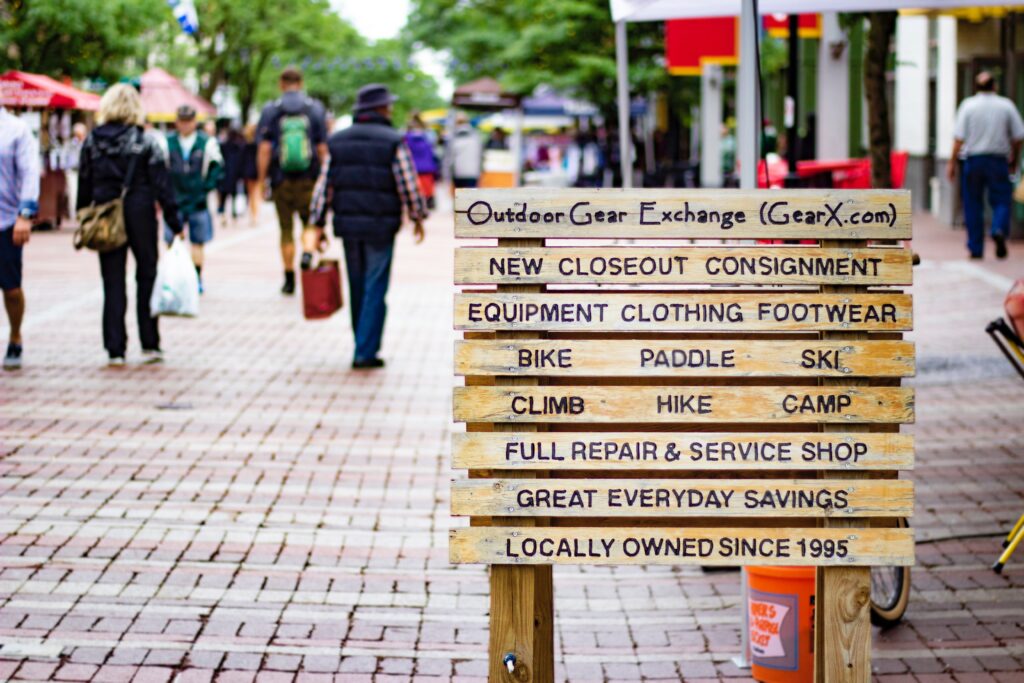
Well, here is your guide to sustainable living in Burlington with some of my favorite places that won’t make your wallet beg for mercy. Support local businesses and do some good while saving some green! First and foremost, get comfy walking shoes and a bicycle (see below) ’cause this place is great for walking and biking!
Clothing & Outdoor Gear
This post was written by Juan Adorno ’20. Connect with him on LinkedIn.
Author’s Note: The recent earthquakes in Puerto Rico inspired me to write this blog post. I felt a blog to be a fitting forum to speak about a serious topic in a fun way. Because, the only thing I know to bring to darkness — to understand it — is light. Secondarily, I hope for this blog post to serve as a promotion for the new, fresh, literary genre: literary nonfiction: true events, displayed as authentic, original, creative forms.

This blog post aims to illuminate Puerto Rico in a way that is as free to me as the Coqui voices that will continue to sing. In other words, to share a literary nonfiction art work: true events, displayed authentically. From this chair in the Bronx, NY to another in Burlington, Vermont, to the forest of El Yunque, to the Castles of San Juan, to the beaches off the coasts of Vega Baja and Manati—Puerto Rico is the subject of this Letter…
We Hear You, Mother Nature, The Time is Now.
From: Juan Adorno
To: Mother Nature
Cc: Motherland (Puerto Rico)
Bcc: JP1—Blue (Pen Name)
Subject: Puerto Rico
Mother Nature, please, be merciful on the Motherland: sway those hips of the Carribean tectonic plates up against the rigid tips of the North Americans, in such a way that the Boricuas—The spirit of the People of Puerto Rico— are sparked, secured and prosperous in the long-run. Puerto Rico. The Enchanted Island. The Boriken Island. La Isla del Encanto.
On Tuesday, January 11, 2020, you rocked the motherland, 6.4 earthquake, sending people across the island to sleep in their patios, the streets and beaches in fear of their houses collapsing on them and their loved ones. The street where my Grandma lives was shut down and folks set up tents to sleep. In Vega Baja, Puerto Rico, half hour away from San Juan.
Grounds shaking, power outages: and, you continue to speak Mother Nature. Tremors. Traumas.
In spirit, I put myself setting up a tent in the Vega Baja Beach while Earthquakes pass, probably not the smartest move, but it’s the same beach that was travelled to by one of my writing heroes, Manuel Adorno. That beach was the setting of his seminal short story, and the hippies came. Manuel was praised by great writers of his day like Gabriel Marquez.
Mother Nature, may you grace this blog post to serve as a genuine illumination of an interaction with you and may you grace the motherland.
I felt it was just the other day when I was standing in front of my Sustainable Innovation MBA class, in Burlington, Vermont, delivering a business pitch of Puerto Rico Solar Energy Company LLC., a PR-based TBL solar energy company idea that serves to help Puerto Rico toward Energy Freedom. I opened the group presentation with a personal story of the origin of the idea to create the business: A Hurricane Maria Story. The power was out in the neighborhood and it was renewable energy, namely solar energy and electric batteries that save the day. I delivered that presentation several months ago and it was in reference to Hurricane Maria which took place in 2017. Hurricane Maria exposed the island’s infrastructure vulnerabilities.
It’s been years since Hurricane Maria, the history-bending catastrophe that took thousands of lives, and, yet, the islands energy mix is still not fixed.
The time is now: to be energy rich; to sustainably capitalize and commercialize; to self-sustain; to, then talk of food, economic, and artistic world warping potential contained in the rich port—Puerto Rico.
We Hear You, Mother Nature, The Time is Now!
Sincerely, Concerned Son
This post was written by Sara Farnsworth ’20. Connect with Sara on LinkedIn
As the only mother in the Class of 2020, I’d like to take this opportunity to reflect on a key skill needed to achieve holistic success throughout the program —”Balance.” I came to The Sustainable Innovation MBA program after some 20 years in the work force, where I have worn many hats, from catering to property damage repair and managing a business. But, my most important job is that of Mom. What is it like to be a single mother and dedicate myself to earning my MBA? It’s about Balance.
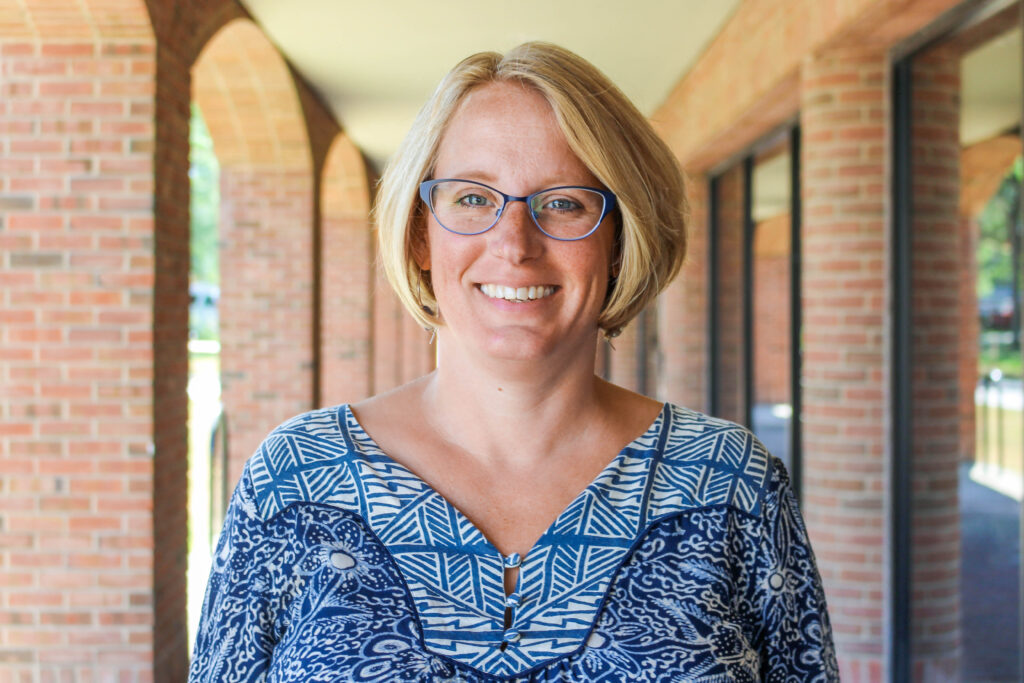
The program has taught me that balance is about setting healthy boundaries and managing time effectively. A challenge that arose for me was making choices between desiring to be out socializing and networking with classmates vs. spending time with my two boys. While, instinctively, the choice is easy for me — Mom duties always come first — I have come to learn that it is also important to build rapport and develop relationships with teammates as a way to cultivate team cohesion.
One of the important skills I’ve practiced in the program is simply being present. When I am at school, I am in MBA work mode; when I am home, I am in Mama mode — and, so forth. After riding the bus into town with my kids and dropping them off at their campus, I make my way to Kalkin Hall. These moments of walking up College Street are full of reflection, peace and planning. These “quiet” moments are scarce so I really cherish the morning light and walking to the Grossman School at UVM. I arrive to school a few hours before class to work while my mind is fresh. I find my time in the morning prior to the start of classes, getting assignments completed and focusing on readings, has been incredibly helpful in achieving balance.
Furthermore, I generally work through the 90-minute lunch break we are allotted each day, and sometimes stay until 5:30 or 6pm, to ensure I am getting my schoolwork done. My goal has been to ensure that when I leave the building for the day and scoop my children from their afterschool activities, I’m ready to be Mom –- fully. I find that through my life experiences, I can contribute meaningfully to others’ learning, while I also am learning from others. Through all of this, I find time to be at home to make dinner with my kids each day, to help them with their homework and reflect on their day. When I am at home, my job is Mom.
When it comes to social activities among the cohort, I pick and choose wisely, generally participating in group potlucks that enable me to bring my kids. My kids have also been learning through this program and have watched me to ensure I am maintaining our life and home, while pursuing my dream of achieving an MBA. My children have met my fellow classmates and have learned and grown through their interactions. This program is positively affecting our lives.
I won’t say that it’s easy to create balance, but it is so important to my mental health and well-being to recognize when things are not in balance and making changes so that I am able to feel at ease with the pace. This program has been wonderful for my two sons and I, and I have the utmost confidence that I have made the right decision in joining this program, and it will positively affect their lives in addition to my own. They see me working hard and dedicating myself to my studies, while enjoying the benefits of the Mom they have always counted on. The balance is what will get me to the day of graduation and will propel me toward all the goals and dreams I have following the completion of this program. I hope that my sharing of my experience of being a part of The Sustainable Innovation MBA program may influence people of all walks of life, from all circumstances, to consider the program, as with diligent balance and a positive “can-do” attitude, one can be successful in the SI-MBA program.
I’m so happy to be a part of the SI-MBA class of 2020, and I look forward to what is to come, with a full heart and hands ready to change the world.
This post was written by Lauren Frisch ’20
As long as you are making lasting sustainable change, should motives matter?
This past semester, we’ve taken a deep dive into the world of corporate social responsibility (CSR), and thought about the different motives companies may have to invest in CSR practices. Some companies have economic motives.[i] Others want to build relationships with various stakeholders, called relational motives. Finally, some companies have moral motives, wanting to make the world, or their piece of it, run a little better.[ii] Consumers tend to digest CSR information better when there is at least a hint of a moral motive. But is this the right way to truly encourage CSR across the board?
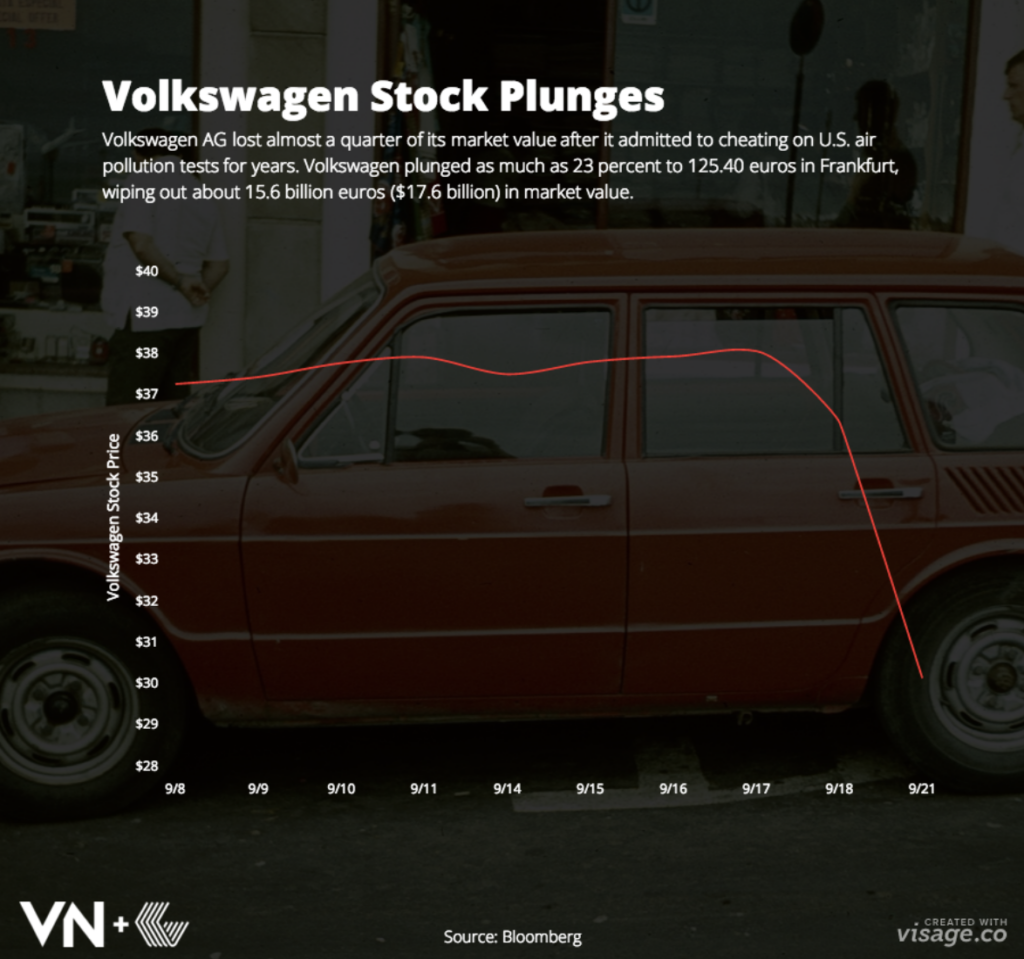
Let’s use Volkswagen (VW) as an example. In 2015, news broke that VW had created technology that faked emissions levels in about 580,000 vehicles between 2006 and 2015.[iii] Defeat devices were created to register when a vehicle’s emissions were being tested, and modify performance to achieve a particular emissions level. By March 2019, VW had paid more than $30 billion in fines, penalties, resolutions and settlements towards Dieselgate.[iv] The company agreed to invest in electric vehicle (EV) technology and infrastructure to offset some of the damage caused by their deceptive technology.[v]
VW was able to survive this scandal and continue to thrive as a company, but not without a cost. The company had a turnover in high-level leadership after the scandal. The brand’s reputation was tarnished and stock prices dropped 23%[vi]. Enter Herbert Diess, a new CEO with a plan to completely reinvent Volkswagen as a sustainable leader in the industry. Diess and his team created Together 2025, a vision for how VW would grow between 2015 and 2025.[vii] The main goal of Together 2025 is to transform VW into a leader in the EV market. The company hopes that by 2025, 25% of VWs on the road will be EVs, a lofty goal that will help transform the makeup of the worldwide auto landscape.[viii]
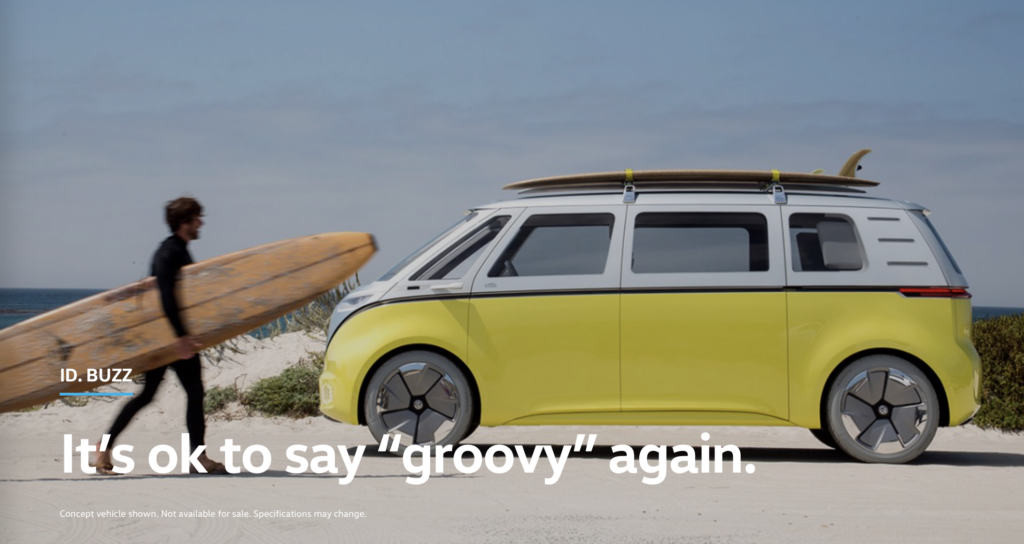
The company has promised to launch a fleet of seven new electric vehicles, including four for VW, two for Audi and one for Seat.[ix] VW is also investing in new EV factory space and charging infrastructure, and the company hopes to establish and implement a carbon neutral supply chain by 2050.[x],[xi]
Critics of VW argue that the company should not be viewed as a leader in sustainable innovation because they were forced to implement aspects of this radical transformation to make up for Dieselgate. Others believe Diess is a transformational leader with strong moral motives, and is using this colossal environmental mess up to inspire change and create an automotive industry that he truly believes in. Consumers may never know the exact motives behind VW’s together 2025 campaign, although the truth likely lies somewhere between the suspicion of the cynics and the hope of the optimists. Almost all human behavior and corporate action is driven by varying degrees of multiple motives.
But should
Volkswagen’s motives matter if the company is able to advance renewable
technology? What matters is that Volkswagen is on the road to becoming a leader
in EV technology, and is investing not only in vehicle design, but factories
and infrastructure that will help support growing demand into the future. It
would be best for the industry if Volkswagen’s transformation is wildly
successful, because it will build momentum to advance critical EV technology at
VW and may inspire other companies to make similar commitments.
Of course, I’d prefer if all companies had
strong moral motives to back their CSR work. But it’s important for us to
recognize that people come from different experiences, and companies have
different priorities. At this stage, the change we’re making matters more than
the reason we started on the path. And if companies can profit from solving a
problem for someone, hopefully it will encourage others to follow in their
lead, and help sustain more change.
Endnotes
[i] Aguilera, Ruth V., Rupp, Deborah E., Williams, Cynthia A., Ganapathi, Jyoti. “Putting the S back in corporate social responsibility: A multilevel theory of social change in organizations.” Academy of Management Review. 3 Nov. 2007.
[ii] Aguilera, Ruth V., Rupp, Deborah E., Williams, Cynthia A., Ganapathi, Jyoti. “Putting the S back in corporate social responsibility: A multilevel theory of social change in organizations.” Academy of Management Review. 3 Nov. 2007.
[iii] “Exhausted by scandal: ‘Dieselgate’ continues to haunt Volkswagen.” Knowledge at Wharton. 21 Mar. 2019, https://knowledge.wharton.upenn.edu/article/volkswagen-diesel-scandal/
[iv] “Exhausted by scandal: ‘Dieselgate’ continues to haunt Volkswagen.” Knowledge at Wharton. 21 Mar. 2019, https://knowledge.wharton.upenn.edu/article/volkswagen-diesel-scandal/
[v] Voelcker, John. “VW Electrify America plan for electric-car charging across the US released.” Green Car Reports. 18, Apr. 2017,https://www.greencarreports.com/news/1109971_vw-electrify-america-plan-for-electric-car-charging-across-u-s-released.
[vi] “Exhausted by scandal: ‘Dieselgate’ continues to haunt Volkswagen.” Knowledge at Wharton. 21 Mar. 2019, https://knowledge.wharton.upenn.edu/article/volkswagen-diesel-scandal/
[vii] “2018 Sustainability Report.” The Volkswagen Group, Mar. 2019, https://www.volkswagenag.com/presence/nachhaltigkeit/documents/sustainability-report/2018/Nonfinancial_Report_2018_e.pdf
[viii] Keith, Travis. “Volkswagen stock price plunges after emissions scandal.” Column Five Media. https://www.columnfivemedia.com/volkswagen-stock-price-plunges-after-emissions-scandal
[ix] Rauwald, Christoph. “Volkswagen’s road to riches or ruin starts in this factory.” Bloomberg, 6 Sept. 2019, https://www.bloomberg.com/news/articles/2019-09-06/volkswagen-s-road-to-riches-or-ruin-starts-in-this-factory
[x] “2018 Sustainability Report.” The Volkswagen Group, Mar. 2019, https://www.volkswagenag.com/presence/nachhaltigkeit/documents/sustainability-report/2018/Nonfinancial_Report_2018_e.pdf
[xi] Rauwald, Christoph. “Volkswagen’s road to riches or ruin starts in this factory.” Bloomberg, 6 Sept. 2019, https://www.bloomberg.com/news/articles/2019-09-06/volkswagen-s-road-to-riches-or-ruin-starts-in-this-factory
This post was written by Faith Vasko ’20
Greta Thunberg. The face of climate resilience. Notice how I didn’t say change? Because that’s what Greta is trying to stop. Change means an ending, resilience is the ability to recover. Words are important. Greta recently released a preview for the film Nature Now in coalition with several climate organizations, such as Conservation International, exposing the solution to climate breakdown. The proposed solution from the Queen of climate resilience? Trees.

Her partner in the film, writer and climate activist George Monbiot, further elaborated that trees are “natural climate solutions,” saying, “nature is a tool we can use to repair our broken climate.” This type of language, framing nature as a “tool,” has been an influential concept in my time as a MBA candidate in The Sustainable Innovation MBA program. In our first week of classes, Taylor Ricketts, the Director of the Gund Institute at the University of Vermont, presented on Ecosystem Services.
Through the business lens, the concept of value is important. The value of ecosystem services is that they provide benefits to society. There are several ways in which to classify these services as well as how they can be applied. In framing ecosystem services as valuable natural capital for business opportunities, ecosystems and biodiversity is then quantified. This allows ecological economies to be emphasized.
This ideology, similar to biomimicry — in looking to how mimic natural processes in design and production — was new territory to me just like the University of Vermont this past August. Taking these concepts I learned in class, with the access to the campus experience, I was able to further my curiosity by beginning work under a Gund Faculty Fellow and Doctoral Candidate researching the non-material relationships and benefits from cultural ecosystem services in the face of scientific uncertainty.
I am grateful and excited by the expansion of opportunities learning fosters and the rabbit holes they can lead you to. Greta has exemplified this notion of expansion in spreading the message of climate activism. Nature is a tool, and with the right language applied —such as ecosystem services and ecological economies— its value can be communicated to transform and create sustainable business ventures while supporting the environment.